
© My Quiet of Gold by Cooper & Gorfer at Gestalten Space. An exhibition from The Hasselblad Foundation.

Artist team Sarah Cooper and Nina Gorfer revel in the other side of digital photography. Instead of the ubiquitous, instantaneous snapshot, Cooper & Gorfer devote hours to composing and digitally augmenting each photo, ending with a surreal image of almost-impenetrable depth. Sometimes only a simple color filter is needed to make an austere backdrop of mountains suddenly loom into the foreground; sometimes everything but a woman’s face is digitally replaced with rich, fantastic prints and colors. Depth has no fixed value in Cooper & Gorfer’s work, and light is even less reliable.
When the technique is applied to portraiture, the resulting narrative implications are arresting. My Quiet of Gold, now at Gestalten Space in Berlin through November 27th, features a series of portraits made in rural Kyrgyzstan of locals who first recounted their own remarkable personal histories to the photographers through interviews and conversations. Taken as a whole, the exhibition offers the sum of a story without conforming to sequential form, and without ever speaking a word.
Slideshow
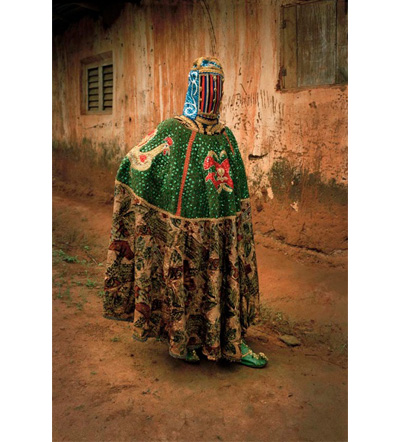
Courtesy and copyright of Jack Bell Gallery.

A native of Benin and founder of the tiny West African nation’s first photography school, Leonce Raphael Agbodjélou has always produced portraits that are uniquely poised between tradition and modernity. His latest series of photographs captures the extraordinary costumes of the Egungun ritual, a Yoruba masquerade performed by the entire community to reach out to the dead. In full regalia the masqueraders are resplendent in textiles of complex patterning and opulent color, yet the obscuration of their faces tinge their energy with an unapproachable eeriness. Each subject stands on a sunlight-soaked village street, as much a fixture of present-day Yoruba society as ever. Agbodjélou’s gloriously technicolor lens finally records Egungun garb in a way that can do it justice. The Egungun Project exhibition opens at the
Jack Bell Gallery in London on November 11th.
Click for Slideshow
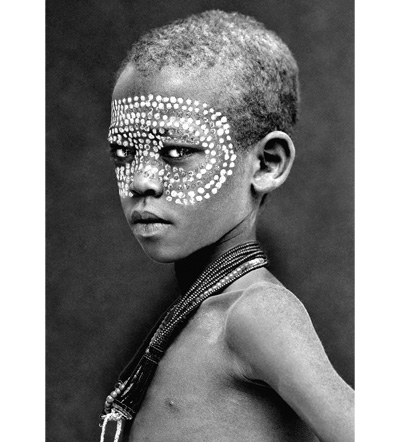

German-based photographer Mario Marino has now been immersed in his “Faces of Africa” project for over six months, producing powerfully sensitive portraits of South Ethiopians. His latest show, opening at Galerie Brockstedt, Berlin, on November 4th, focuses on the area’s children, who have inherited the tradition of wearing the leaves, chalk, and branches of the landscape as ornaments. Marino’s goal of capturing the extraordinary artistry and individualism of this practice has always existed under the threat of time—as with so many others, the regional custom recedes as tourism and technology increase their presence. But Marino’s newest portraits show a cultural heritage alive and well in the youngest generation.
Click for Slideshow

Zhang Xiaogang Lamp No. 2, 2009 bronze 30-1/2 x 12-1/2 x 13 inches © 2011 Zhang Xiaogang Photo courtesy The Pace Gallery

The invention of the light bulb infamously extended the world’s workday, but for artists it changed the nature of work itself. Prior to unlimited, easily-manipulated lighting, art was made by, for, and of the temperamental illuminations of sunshine and firelight. Natural light was crucial but elusive, a combination that made it an artists’ obsession. On the canvas especially, light was almost its own person; Painters from Caravaggio to Renoir based their technique on an inspired representation of light.
Given what a revelation electric light was, it’s not surprising that artists almost immediately turned to depicting the actual bulb.
Burning, Bright: A Short History of the Light Bulb, at the Pace Gallery through November 26th, examines this impulse in artists across media. In a circus tent scene, Calder positioned the spotlight as an omnipotent god in stark gouache. Lichtenstein sculpted light rays as a solid mass, a brazenly colored object. Then there are those who used bulbs as the medium: Arman’s assembled chandelier, Noble and Webster’s billboard-style blinking lights, and a neon scrawl by Keith Sonnier standing for the light sculpture movement.
Though the miracle of technological advancement is at the heart of Burning, Bright, the exhibition leaves open the question at the conclusion of the light bulb’s story: the fact that today it is unsustainable. We are asked to consider how our sight was changed by the birth of the light bulb in the face of its death.
Click for Slideshow

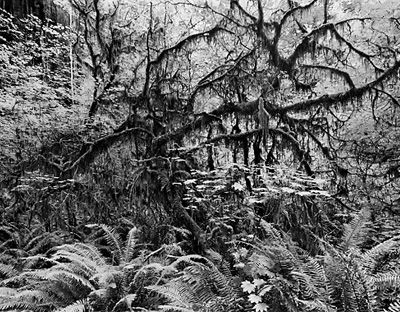
Richard Rothman


Richard Rothman began what would become his latest book in a tent in northern California, with a 4×5 camera and the intention to photograph old-growth redwood trees.
Redwood Saw, out on October 14th, is the story of Rothman’s five years photographing that forest and Crescent City, the depressed town that was cut out from it a century and a half ago. In ponderous black and white, Rothman juxtaposes the grandeur of the ancient trees with the harsh reality of a logging and fishing town that no longer has the natural resources to log or fish.
The forest photographs are arresting in their depth; Rothman consistently finds the junction at which branches, trunks, leaves, and stalks from all different plant species meet, forming a gorgeously textured tableau that speaks of the rhythms of the forest. By contrast, the images of Crescent City are divided between shots of dilapidated architecture and portraits of citizens in their homes and workplaces. The town is portrayed in a stark, almost stylized manner, as if by draining the area’s forests the logging industry managed to visibly bleed dry its own life force. If these pictures are a ruthless return to the human scale, we get some reprieve in the photos where nature and society meet. Where locals stand at the edge of the undergrowth or charred tree stumps stretch into the distance, Rothman succeeds so completely at finding a harmony and balance in the landscape that even in shots of what is undoubtedly a tragedy—a ruined forest of stumps—the regality of the natural world remains.
Click for Slideshow
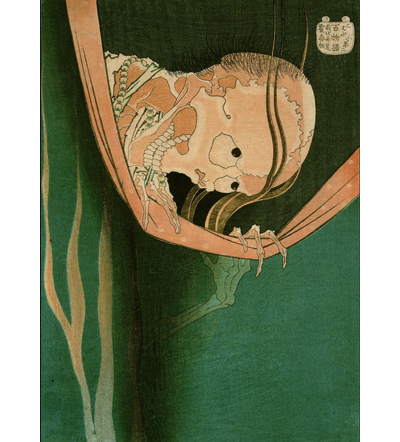
Hokusai, Kohada Koheiji, © Katsushika Hokusai Museum of Art

The late-Edo period master Hokusai left two artistic legacies: one in Japan as a preeminent innovator in the ukiyo-e style, and one in Europe as an icon of the hugely influential japonisme movement. Hokusai’s century-straddling career as a painter, printmaker, and illustrator is the subject of Hokusai, the artist’s first major retrospective in Germany, at the Martin-Gropius-Bau Berlin through October 31st.
Ukiyo-e, or “floating world” imagery, was an immensely popular style of genre painting in Japan by the late 1770s, when Hokusai was beginning his career in Tokyo. Though skilled in the detailing and attentive characterization required of the atmospheric ukiyo-e, he almost immediately moved beyond its traditional subject matter of urban revelry. In applying ukiyo-e’s ephemeral technique to the natural world, Hokusai expanded the genre to include expressive landscapes, seascapes, and closely observed studies of plants, and produced some of Japan’s most famous woodblock prints in the process.
Click for Slideshow
(more…)
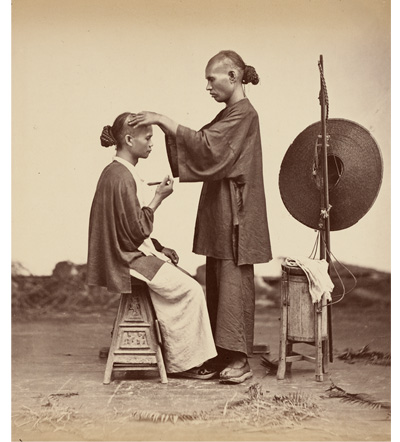
John Thomson Itinerant Barbers c. 1868-72

Photography came to China at the start of the 1860s, introduced by foreigners but enthusiastically embraced by natives. In the decades leading up to the twentieth century, every incarnation of the new technology managed to replicate itself in the Chinese popular consciousness: formal landscapes, official portraiture, personal documentation, and architectural and street scenes. These extraordinarily rare images are the meat of Sheying: Shades of China 1850-1900, opening September 15th at Throckmorton Fine Art.
The black-and-white photos, a mixture of work by transplanted Europeans and fledgling Chinese photographers, have the painterly shades and delicate composition of Europe’s ongoing pictorialism movement. But the pictures are unmistakably Chinese in subject matter. In a cramped Cantonese street, stall banners blot out the sky. Two prisoners pose stoically in cangues. There are countless images of harbors, filled with the bobbing handmade boats that powered the national economy. For all the influence the relatively established European photographers held, China proved itself to be an inimitable sitter. The collection provides a fascinating look at an empire before industrialization.
Click for Slideshow
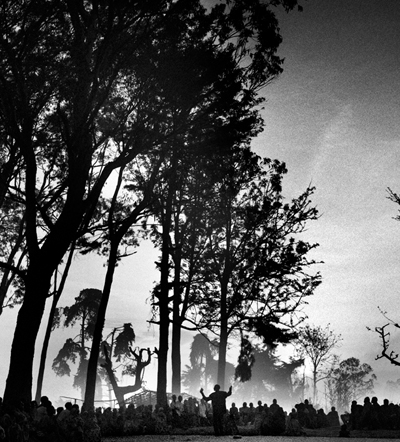

The black-and-white photography of Marcus Bleasdale, who has spent over a decade documenting the conflict-torn Congo, includes some of the most comprehensive and richly textured images to have come out of the area. Bleasdale has a knack for capturing the spontaneous – his camera immerses itself in successive, wildly contrasting environments and waits for his subjects to reveal themselves in a single perfect, instinctive gesture. Thus his photos are all about movement, and the way it animates everything from a soldier-filled jungle to a children’s municipal shower. Bleasdale’s Congo work is the focus of a show at Anastasia Photo opening September 15th.
Click for Slideshow

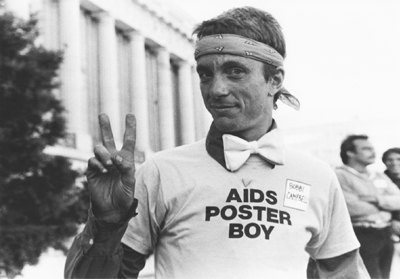
AIDS Poster Boy


David Weissman’s last documentary, co-directed with Bill Weber, was a Technicolor portrait of the Cockettes, the highest-flying drag queen ensemble in 1960s San Francisco. For his next non-fiction project Weissman moves on to the following chapter of life in that city’s gay community, after the euphoria of finding each other has given way to the struggle of staying together. We Were Here, also co-directed by Weber and opening September 9th in New York, is a gracefully elegiac remembrance of the 1981 emergence of AIDS in San Francisco and the magnificent response of ordinary citizens during the earliest days, before the disease was understood or even named. Weissman follows five central figures, weaving together the perspectives of medical professionals, city caregivers, and, in what are inevitably the most harrowing interviews, those with stricken loved ones. An undercurrent of testimonial pervades the film; as much as it is about enormous courage, it is still the tale of those who died, and this weight has not been lost on anyone in front of or behind the camera.
David Weissman moved to San Fransisco five years before AIDS was discovered in the city. He spoke with PLANET about the enormous repercussions of the initial AIDS panic and why San Francisco is still an extraordinary city.
(more…)
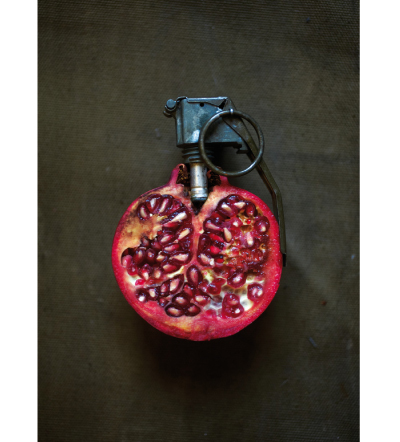
Fruit of the Boom (Granate), 2010
 Good Weather
Good Weather, an exhibit of Berlin-based artist Sarah Illenberger’s photographs at Gelstalten Space through September 11th, is an exercise in dissonance. A simple light bulb, upon a moment’s inspection, turns out to be a pear. A minimalist pair of headphones suddenly reveals itself to be made of two cupcake wrappers strung together. Straightforward in composition, lighting, and sly good nature, an Illenberger still life is lovingly handcrafted to wreak havoc on the viewer’s expectations every time. A halved pomegranate, with only a bit of metal stuck at the top, becomes an instantly recognizable hand grenade—but hasn’t the meat’s rich color, the glisten on the seeds, the plain
bloodiness of a pomegranate always spoken to your subconscious of violence? And if it didn’t, won’t it now? The joke in the photos isn’t that you’re seeing a trick object; it’s that you’re seeing two opposing images at once, and neither will yield. Illenberger spoke to PLANET about bringing her contradictions to a gallery space—right down to the name of the show.
(more…)





 Facebook
Facebook Permalink
Permalink Digg
Digg Reddit
Reddit LinkedIn
LinkedIn StumbleUpon
StumbleUpon Tumblr
Tumblr










